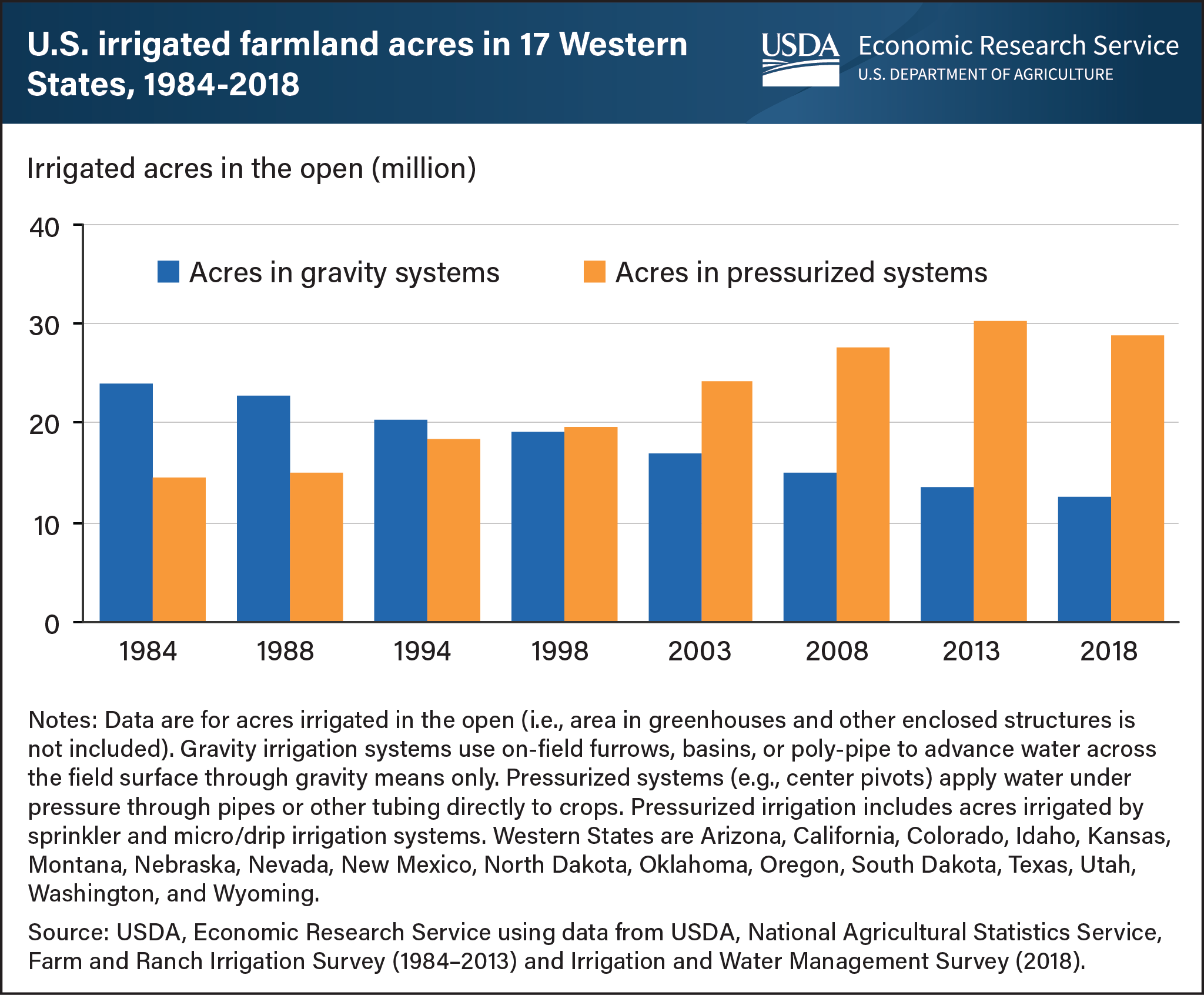Use of pressurized irrigation systems in the western United States roughly doubled from 1984 to 2018
- by R. Aaron Hrozencik
- 9/13/2021

There are two methods to apply irrigation water to crops: gravity or pressurized irrigation systems. Gravity irrigation systems use on-field furrows, basins, or poly-pipe to advance water across the field surface through gravity means only. Pressurized systems apply water under pressure through pipes or other tubing directly to crops (e.g., sprinkler and micro/drip irrigation systems). Under many field conditions, pressurized irrigation systems use water more efficiently than gravity systems, as less water is lost to evaporation, deep percolation, and field runoff. Over the last 30 years, the number of acres irrigated using pressurized irrigation systems roughly doubled while the acreage irrigated using gravity systems declined substantially in the 17 Western States. In 2018, 72 percent of all irrigated cropland acres (28.96 million acres out of 40.31 million acres of total irrigated area) in 17 Western States used pressurized irrigation systems, up from 37 percent in 1984. This chart appears in the USDA, Economic Research Service topic page for Irrigation & Water Use, updated August 2021.

